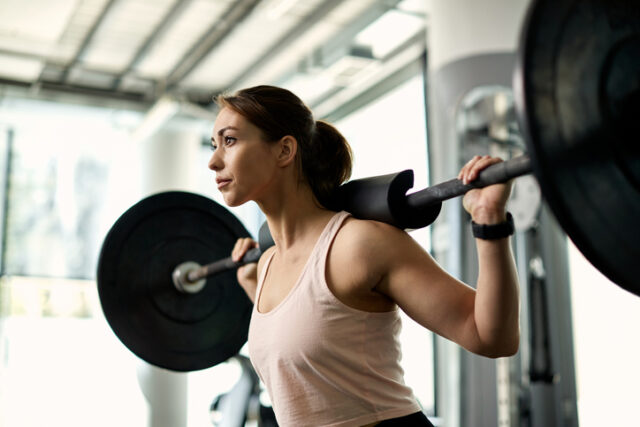There is no doubt that lifting weights is an important part of training for triathlon. But many triathletes are confused as to why they are lifting weights. This can in turn lead to an inefficient use of time in the weight room, and athletes often walking away unsure if they accomplished what they were supposed to. I believe that this is because that there isn’t one thing we triathletes are trying to achieve with our strength training – there are three, but we can’t achieve them all with the same type of training.
Before we dive into what those goals are, let’s define what type of training we’re talking about – I am talking about “traditional” strength training. This could involve using dumbbells, barbells, kettlebells, machines or any other manner of creating resistance, but is all based around the idea of lifting, pulling or pushing heavy things to create fatigue in one, or several, muscles through a series of “sets” of a repeated movement. I am not talking about mobility workouts, plyometrics, speed training or other specialized training that you could do.
When using traditional strength training techniques, one of the main goals that we can work towards is to decrease our risk of injury. We do this primarily by targeting our core and the muscles that support our hips and shoulders. All the force that we produce for our sports transits through these parts of the body so these muscles deserve some specific attention. This will ensure that they are strong enough to sustain the loads we put them through in our day-to-day training.
Another outcome that we can work towards with traditional strength training is to increase our work capacity. Basically, if you increase the maximum strength of the muscles you rely on to run (glutes, hamstrings, quads and calves), you will be able to run at your old pace while using a lower percentage of your new higher maximum strength. This means you will be able to run at that pace for a longer time before fatiguing your muscles. This doesn’t mean that your aerobic fitness will suddenly improve, but it does mean that muscular fatigue will be less of an issue.
A third goal that we can achieve through strength training is to improve our movement efficiency. Asking our body to lift really heavy things until we can’t lift them anymore is pretty stressful (in a good way!) on our muscles. Our body responds to this stress by trying to be better prepared for the next time we are asked to do something like this. One of the ways that it does this is by training your nervous system to coordinate the movements of your muscles more efficiently.
One thing that is important for all triathletes to know is that it is not possible to achieve all three of these objectives with the same workout. These are separate goals, achieved through different strength training programs. Yes, there might be some overlap, but most strength programs will be targeted to achieving one, and maybe two of the above. We wouldn’t expect one run workout to improve every aspect of our run fitness, so why would we expect the same thing in the weight room?
Another thing to keep in mind is that there is a right time of year to use each of these different types of strength training. Training for efficiency and overall work capacity is quite taxing, creating lots of fatigue that could impact other workouts. Consequently, it is best done earlier in the training calendar, when your other workouts are lower in volume and intensity.
Training to prevent injury, on the other hand, is most important when your training volumes and intensities in running, swimming and biking are at their highest. It can also be done in a way that is less taxing overall on your body. This makes it better suited to the busiest time of your training year, when you are running, biking and swimming the most.
Workouts that target these different goals should also look very different from each other, with different movements, relative weight loads and numbers of sets and repetitions. Exactly what goes in to one of these workouts is beyond the scope of this article and will depend on your personal goals, experience and needs, but it is well worth the time to develop a good strength training routine.
If you do that, you can reap gains to your fitness and performance AND avoiding pain from injury!
Darian Silk is a triathlon coach and Clinical Exercise Physiologist based in Toronto. Read more about Darian here or email him at darian@teamatomica.com. You can also check out his TrainingPeaks profile here.
The post How should triathletes approach weight training? appeared first on Triathlon Magazine Canada.
This content was originally published here.









